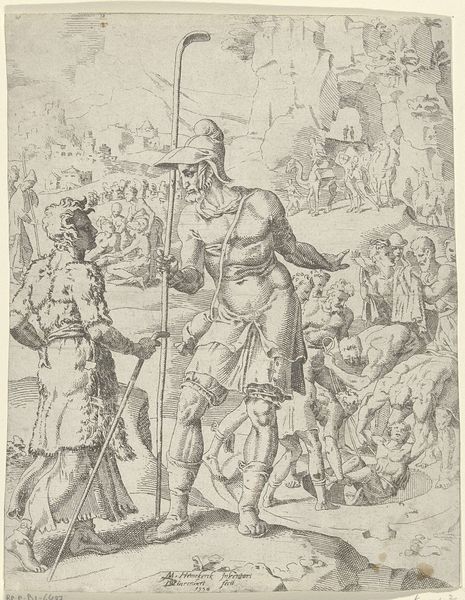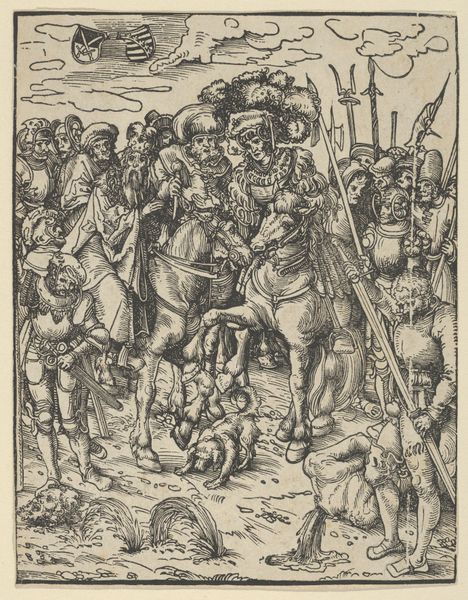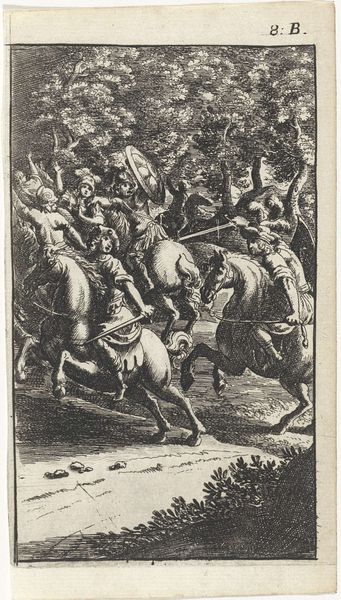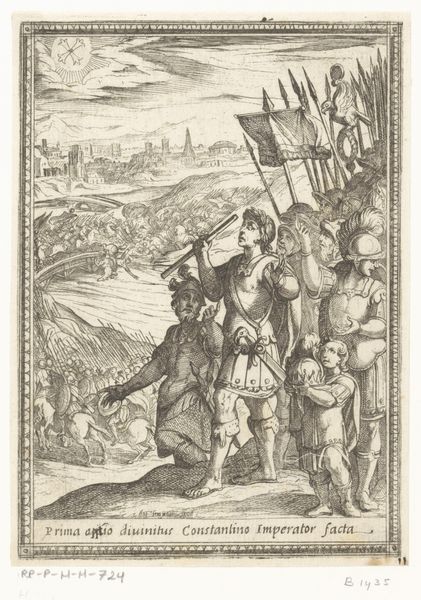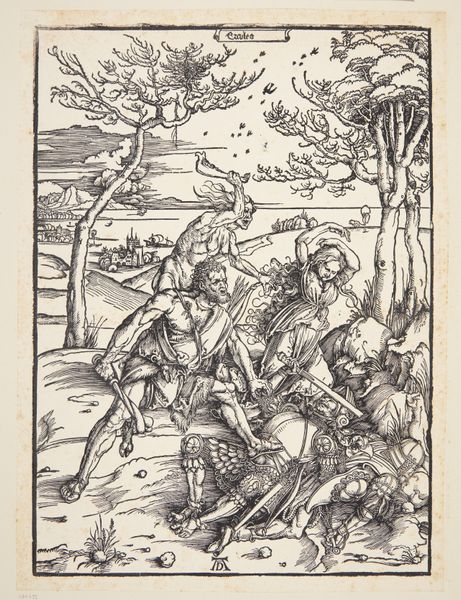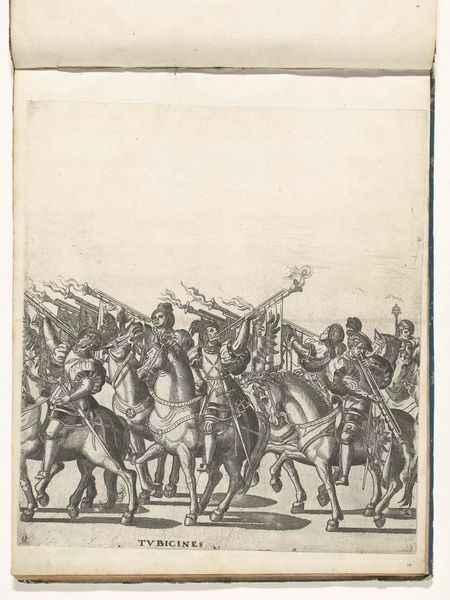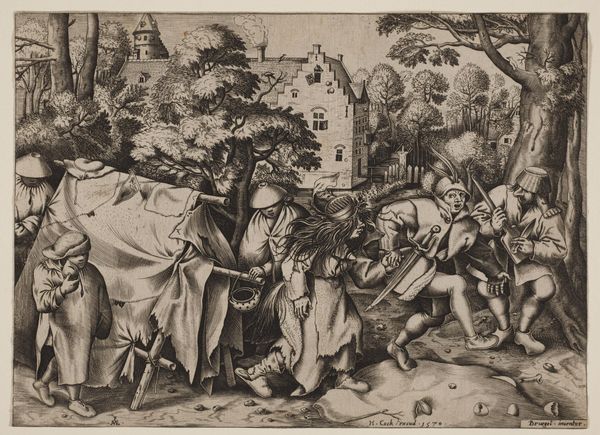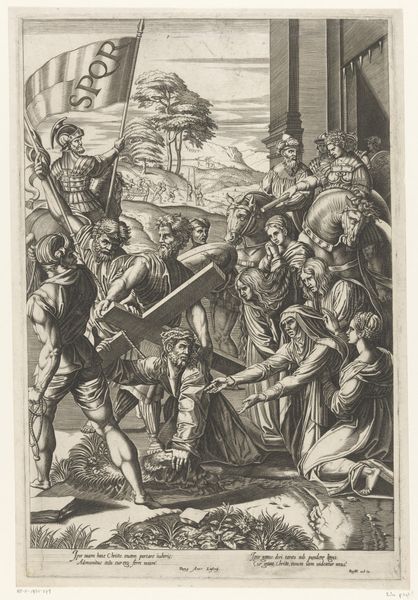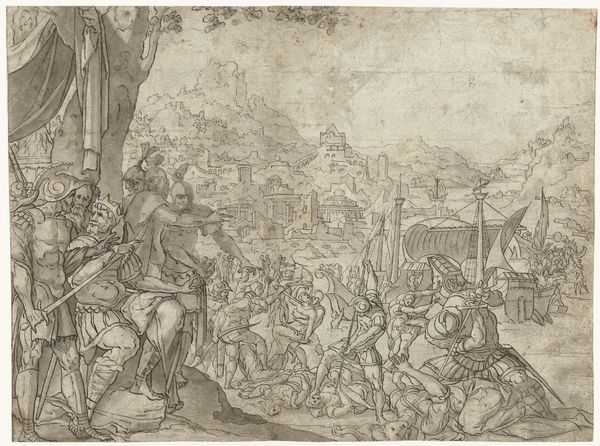
print, engraving
# print
#
landscape
#
figuration
#
line
#
genre-painting
#
history-painting
#
northern-renaissance
#
engraving
Dimensions: height 273 mm, width 236 mm
Copyright: Rijks Museum: Open Domain
Cornelis Anthonisz. created this print, "The Hunt," sometime in the first half of the 16th century. In it, we see a procession of figures on horseback, accompanied by dogs, set against a landscape. Each figure is labeled with text, such as "Gemack," or "Weelde," signifying states of being or human conditions. These figures echo allegorical representations seen throughout history. Consider, for example, the Roman goddess Fortuna, often depicted with symbols of wealth and chance. Or, the figures representing the seven deadly sins, as seen in medieval art. Anthonisz. seems to be engaging with this tradition, using symbolic figures to explore the themes of human nature. The hunt itself is a potent symbol, recurring from ancient mythology to Renaissance tapestries. It can represent the pursuit of knowledge, the chase after desires, or the struggle for survival. In each iteration, the hunt serves as a mirror reflecting our own relentless drives and ambitions. Such images engage us on a deep, subconscious level, stirring primal instincts and desires. The symbols in this artwork thus form a non-linear progression, resurfacing and evolving across different contexts, each time revealing new layers of meaning and understanding.
Comments
No comments
Be the first to comment and join the conversation on the ultimate creative platform.

